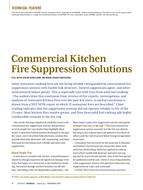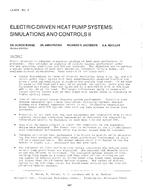This article presents various metal roof configurations that were tested at Oak Ridge National Laboratory in Tennessee, U.S.between 2009 and 2013, and describes their potential for reducing the attic-generated space-conditioning loads. These roofscontained different combinations of phase-change material, rigid insulation, low emittance surface, and above-sheathing ventilationwith standing-seam metal panels on top. These roofs were designed to be installed on existing roofs’ decks, or on top of asphalt shinglesfor retrofit construction.
All the tested roofs showed the potential for substantial energy savings compared to an asphalt shingle roof, which was usedas a control for comparison. The roofs were constructed on a series of adjacent attics separated at the gables using thick foaminsulation. The attics were built on top of a conditioned room. All attics were vented at the soffit and ridge. The test roofs and atticswere instrumented with an array of thermocouples. Heat flux transducers were installed in the roof deck and attic floor (ceiling)to measure the heat flows through the roof and between the attic and conditioned space below. Temperature and heat flux data werecollected during the heating, cooling and swing seasons over a three-year period. Data from previous years of testing have beenpublished. Here, data from the latest roof configurations being tested in year three of the project are presented. All test roofs werehighly effective in reducing the heat flows through the roof and ceiling, and in reducing the diurnal attic-temperature fluctuations.
Presented at Thermal Performance of Exterior Envelopes of Whole Buildings XII, December 2013
Citation: Thermal Performance of Exterior Envelopes of Whole Buildings XII
Product Details
- Published:
- 2013
- Number of Pages:
- 8
- File Size:
- 1 file , 5.5 MB
- Product Code(s):
- D-BldConf13-23


